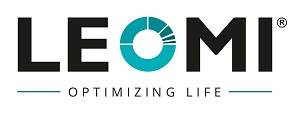Thermal mass flow meter technology is evolving and removing some of the challenges faced earlier.
Thermal Mass Flow Meter deploys mainly two design working principles:
CONSTANT TEMPERATURE ANEMOMETRY
The constant-temperature sensor design maintains a constant temperature differential between a heated sensor and a reference sensor; the amount of power required to maintain the differential is measured as an indication of the mass flow rate. Constant-temperature thermal mass flowmeter currently popular with features as below:
- Active
- High-frequency response
- The low electronic noise level
- Immunity from sensor burnout when airflow suddenly drops
- High rangeability
- Compatible with various RTD Pt-100 sensors, such as hot thin film, wire wound, etc.
- Applicability to gas flows
CONSTANT POWER ANEMOMETRY
Constant power sensor design maintains constant power between two temperature sensors which will provide a flow rate proportional to the temperature of the gas flows. This design is less popular and very limited usage due to technical limitations as below:
- Passive, No feedback mechanism for any correction
- No zero flow stability
- Slow temperature & velocity response
- Limited temperature compensation
Thermal mass flow meter measurement technology is gaining respect in gas mass flow rate measurement in various applications ranging from very low flow rates to ultra-high flow rates accurately with the best turndown ratio, its versatility, ruggedness, no pressure drop, easy installation against some of the conventional technologies such as Orifice, Aerofoil, Pitot-tube, Turbine & Vortex, etc.
Thermal mass flow measurement is realized in different ways and flowmeter types for satisfying different industrial needs such as
- Laboratory style (with By-pass principle) for analytical & research purpose for
- Inline Industrial style for intermediate pipe sizes from 15mm to 150mm generally
- Insertion style for larger pipe sizes, etc.
Today’s process industries demand measurement technologies which are fairly priced and will help in optimizing process efficiency for reducing environmental emissions. To meet such demand, the manufacturers are focusing on the research and development of thermal mass flow sensor technology and its solutions concerning application expectations against other technologies.
For harsh applications customized Insertion Thermal Mass Flow Meters are available. Process gases stack emissions are corrosive. Chemical industries have to follow emission norms and measure the flow for this. It is impossible to measure the flow with conventional technologies. This has many challenges in measurement such as material compatibility & cost of ownership.
Manufacturers like LEOMI offer the following solutions
- HALAR® (ECTFE) coated for corrosive gases up to 100°C (max) and
- PFA Coated for Hot flue gas & corrosive process gases up to 200°C (max)
These advancements are an alternative to costlier Hastelloy C276 Insertion thermal mass flow meter made or other special metal grades if any.
Other air flow meter advancement includes solutions for hot application with corrosive fumes, unknown waste-gas and gas traces in large duct with low-pressure gas mass flow measurement





